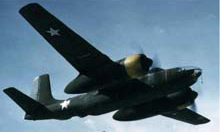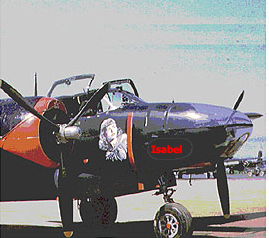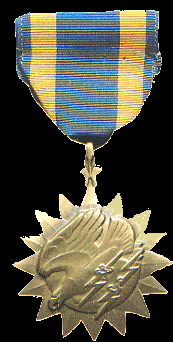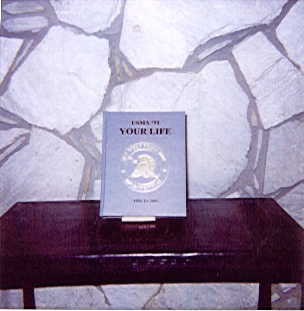 |
|
First
Name |
M.
I. |
Last
Name |
Service
Unit |
| Loren | A. | Anderson | 34th Bomb Sqdn, 17th Bb Wing, 5th AF |
| Jose | A. | Chacon | 90th Bomb Sqdn, 3rd Bb Wing, 5th AF |
| Clyde | NMI | Cocke | 8th Bomb Sqdn, 3rd Bb Wing, 5th AF |
| Joseph | P. | Crocco | 34th Bomb Sqdn, 17th Bb Wing, 5th AF |
| Harold | E. | Headlee | 13th Bomb Sqdn, 3rd Bb Wing, 5th AF |
| Robert | M. | Hechinger | 17th Bomb Sqdn, 17th Bb Wing, 5th AF |
| Frederic | A. | Henney | C-130 W/316th Tactical Airlift Wing, Nam |
| Verle | L. | Johnston | 95th Bomb Sqdn, 17th Bb Wing, 5th AF |
| Ledyard | NMI | Long | 17th Bomb Sqdn, 17th Bb Wing, 5th AF |
| Harold | G. | Marsh | 17th Bomb Sqdn, 17th Bb Wing, 5th AF |
| John | C. | Powell | 12th TRec Sqdn, 67th TR Wing, 5th AF |
| Fred | G. | Reichard | 17th Bomb Sqdn, 17th Bb Wing, 5th AF |
| John | A. | Samotis | 17th Bomb Sqdn, 17th Bb Wing, 5th AF |
| James | R. | Young | 17th Bomb Sqdn, 17th Bb Wing, 5th AF |
The Douglas A-26 Invader saw its gestation before
Pearl Harbor, when the U.S. Army Air Corps was seeking a replacement for
the Douglas A-20, the North American B-25, and the Martin B-26 before
those types even saw squadron service. Designed under the steady
leadership of Ed Heinemann, three prototypes were built at the Douglas
facility at El Segundo, California, near what is today Los Angeles
International Airport. Though the XA-26 successfully flew in July 1942 and
enjoyed a high priority granted by Chief of the Air Corps Gen. Henry 'Hap'
Arnold, the Invader wasn't available in bomb group strength until the war
was nearly over. Even with production underway by Douglas at both Long
Beach, California, and Tulsa, Oklahoma, the deployment of the new attack
bomber was hindered by frustrating delays and mistakes by both the Air
Corps and Douglas. Nonetheless, the A-26 enjoyed a modest role in both the
European and Pacific Theaters with the Army Air Forces before the war
ended in August 1945.
When the Martin B-26 was consigned to the
scrap heap after the war, and the B-25 was relegated to support roles in
the new USAF, the A-26 was re-designated as the new B-26 and it became the
primary light bomber in postwar service.
All Black for Night Intruder Work!

Though it was only supposed to bridge the gap until the new
jet bombers were available, the B-26 assumed a new role in June 1950 when
North Korea pounced upon a vulnerable South Korea. The Invader became part
of the thin line that held the Communists at bay while the United Nations
responded to the aggression. The B-26 went on to play a pivotal role
in night interdiction during the war, a role it was neither designed nor
equipped to perform, but for which it proved admirably
suited.
A decade later, the USAF was looking for a capable
counter-insurgency weapon for use in Southeast Asia, and turned once
again to the venerable B-26. The old airframes were tired by then, but
the USAF had forty Invaders remanufactured to become new B-26Ks and they
served from bases in Thailand and South Vietnam until 1969. Other users of
a more covert nature also found the B-26 very capable. The American CIA
fell in love with the reliable workhorse, and employed Invaders in
operations from Indonesia to Cuba. The hot but simple B-26 was also used
in the conflicts of revolution and counter-revolution fought on the
fringes of the Cold War, and equipped numerous air forces, both legitimate
and rebellious, around the world for over thirty years.
Its
aggressive capability aside, the B-26 also found a peacetime role. Surplus
Invaders became fast company transports, electronic test beds, and air
tankers for forest fire fighting. Today, the old B-26 Invader soldiers on,
no longer fighting wars nor making money, but now to commemorate airmen
and battles of years past. A small number of Invaders still fly as war
birds, some meticulously restored to conditions not seen since the
original assembly line.
The Invader has often been overshadowed by
other aircraft and circumstances. It saw service too late in World War II
to lay claim to a distinctive heritage. By Korea, it was seen as a
workhorse and just an old propeller job, spotlight now ceded to new jet
fighters. In Southeast Asia, it was covertly operated and lost in the
ambiguities of that conflict. Even today, the slim fuselage, huge
nacelles, and graceful lines are not enough to prevent perpetual confusion
by many people between the Douglas B-26 Invader and the Martin B-26
Marauder, its somewhat portly predecessor.
Thought you’d enjoy this little bit of history of the
oft-forgotten but nonetheless impressive Douglas A-26 and B-26 Invader.
|
|
|
Revised: 01/28/2006
HOME
© 2001 Andy's
Enterprises
Albuquerque, NM 87111
Winners Never Quit
Quitters
Never Never Never Win




